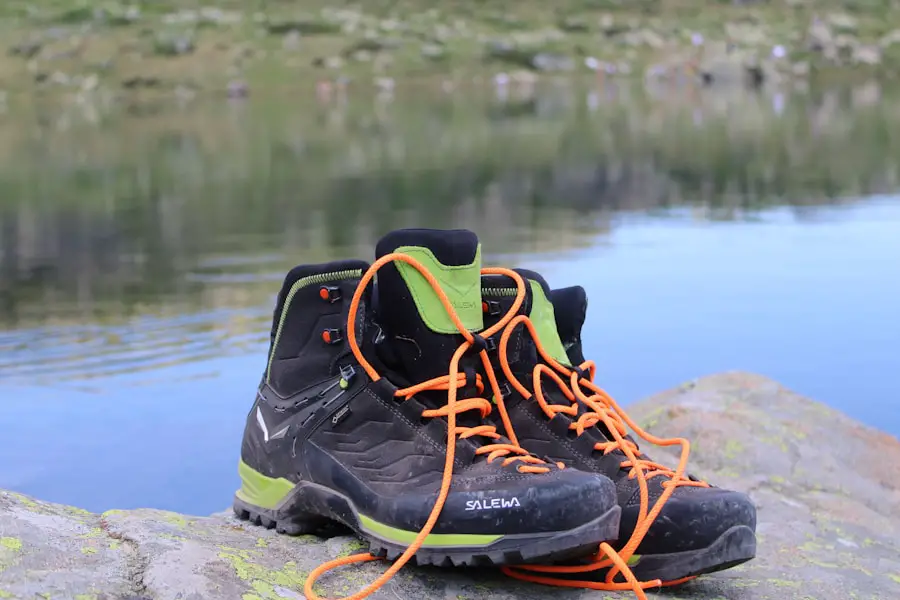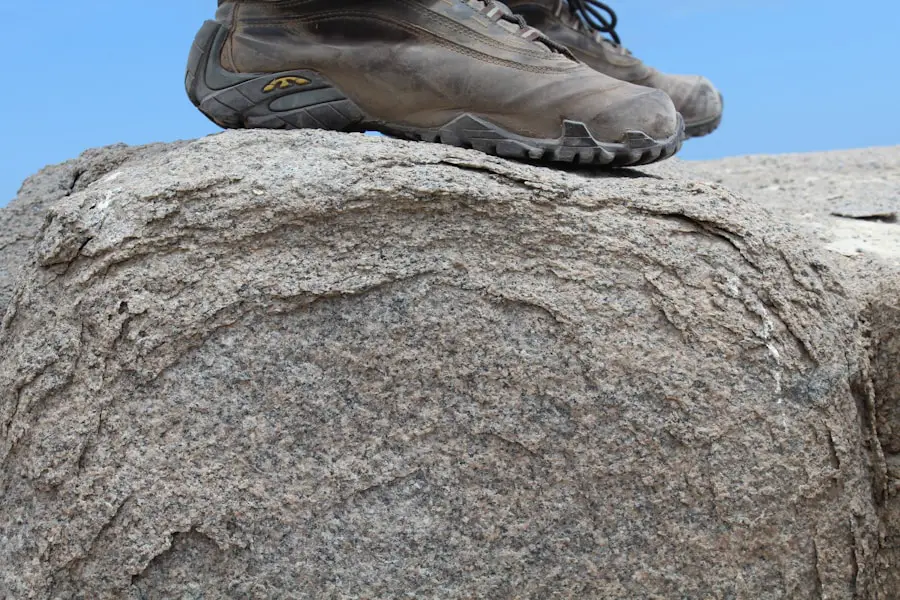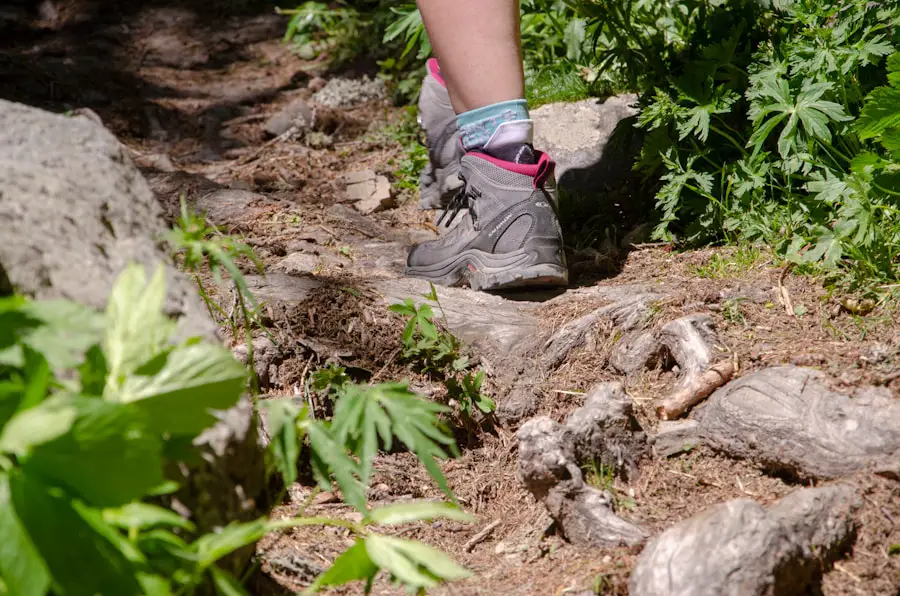When embarking on a hiking adventure, the significance of comfort and durability in hiking shoes cannot be overstated. Hiking often involves traversing uneven terrain, steep inclines, and varying weather conditions, all of which can put immense strain on the feet. A well-fitted, comfortable pair of hiking shoes can make the difference between an enjoyable trek and a painful ordeal.
Comfort is paramount; it allows hikers to focus on the beauty of their surroundings rather than the discomfort of blisters or sore arches. Shoes that provide adequate cushioning and support can help prevent fatigue, enabling hikers to cover greater distances without succumbing to pain. Durability is equally crucial, as hiking shoes are subjected to harsh conditions that can quickly wear down inferior materials.
High-quality hiking shoes are designed to withstand the rigors of outdoor activities, from rocky paths to muddy trails. The materials used in construction, such as robust leather or synthetic fabrics, play a vital role in ensuring longevity. A durable shoe not only protects the feet from external elements but also offers stability and traction, which are essential for navigating challenging landscapes.
Investing in a pair of hiking shoes that combine both comfort and durability is essential for any serious hiker, as it enhances the overall experience and safety during outdoor excursions.
Key Takeaways
- Comfort and durability are crucial in hiking shoes to ensure a pleasant and safe hiking experience.
- When looking for hiking shoes for women, consider features such as waterproofing, traction, and ankle support.
- Top brands known for comfortable and durable hiking shoes include Merrell, Salomon, and Keen.
- Reviews of the best hiking shoes for women can help you make an informed decision based on real user experiences.
- When choosing hiking shoes, consider factors such as terrain, weather, and personal preferences to find the right fit for your needs.
Features to Look for in Hiking Shoes for Women
When selecting hiking shoes specifically designed for women, several key features should be taken into account to ensure optimal performance and comfort. First and foremost, fit is critical. Women’s feet often have different anatomical structures compared to men’s, necessitating shoes that cater to narrower heels and wider forefoot areas.
A proper fit minimizes the risk of blisters and discomfort during long hikes. Many brands offer women’s-specific models that take these differences into account, providing a more tailored experience. Another important feature is the type of sole used in the shoe.
A good hiking shoe should have a rubber outsole with deep lugs for superior traction on various surfaces. This is particularly important when hiking on slippery or uneven terrain, where stability is paramount. Additionally, the midsole material plays a significant role in shock absorption and support.
EVA foam is commonly used for its lightweight properties and cushioning capabilities, while some models incorporate advanced technologies like gel inserts or air cushioning for enhanced comfort. Breathability is also a factor; shoes with mesh panels or moisture-wicking linings help keep feet dry and comfortable during strenuous activities.
Top Brands for Comfortable and Durable Hiking Shoes

Several brands have established themselves as leaders in the production of comfortable and durable hiking shoes for women. Merrell is renowned for its commitment to quality and innovation, offering a range of models that prioritize comfort without sacrificing performance. Their shoes often feature advanced cushioning systems and rugged outsoles designed for various terrains, making them a popular choice among outdoor enthusiasts.
Salomon is another brand that has garnered a loyal following due to its focus on technical performance. Known for their trail running shoes, Salomon has successfully adapted their technology for hiking footwear, resulting in lightweight yet durable options that provide excellent grip and stability. The brand’s attention to detail in design ensures that their shoes cater to the specific needs of female hikers.
Columbia is also noteworthy for its diverse range of hiking footwear that combines style with functionality. Their shoes often incorporate waterproof materials and advanced traction systems, making them suitable for various weather conditions. Additionally, Columbia’s commitment to sustainability has resonated with environmentally conscious consumers, further enhancing their appeal.
Reviews of the Best Hiking Shoes for Women
| Brand | Model | Rating | Price |
|---|---|---|---|
| Merrell | Moab 2 Mid Waterproof | 4.7 | 135 |
| Columbia | Newton Ridge Plus Waterproof | 4.6 | 79.99 |
| Salomon | X Ultra 3 Mid GTX | 4.8 | 165 |
| Keen | Targhee II Mid Waterproof | 4.5 | 135 |
Among the top contenders in women’s hiking shoes, the Merrell Moab 2 Vent stands out for its exceptional comfort and breathability. This shoe features a cushioned footbed and a supportive midsole that provides excellent arch support, making it ideal for long hikes. The Vibram outsole offers superior traction on both wet and dry surfaces, ensuring stability on challenging trails.
Users frequently praise its lightweight design and versatility, as it performs well in various outdoor activities beyond hiking. Another highly regarded option is the Salomon X Ultra 3 GTX. This shoe is particularly favored for its waterproof capabilities, thanks to the Gore-Tex lining that keeps feet dry in wet conditions.
The Contagrip outsole provides outstanding grip on slippery surfaces, while the Sensifit technology ensures a snug fit around the foot. Hikers appreciate its agility and responsiveness, making it suitable for both rugged terrains and casual day hikes. The Columbia Redmond Waterproof Shoe is also worth mentioning for those seeking an affordable yet reliable option.
This shoe combines a lightweight design with waterproof protection, making it an excellent choice for unpredictable weather conditions. The Omni-Grip outsole delivers solid traction, while the cushioned midsole provides comfort during extended wear. Many users highlight its stylish appearance, allowing it to transition seamlessly from trail to casual outings.
Tips for Choosing the Right Hiking Shoes for Your Needs
Selecting the right hiking shoes involves more than just picking a popular brand or model; it requires careful consideration of individual needs and preferences. One of the first steps is to assess the type of hiking you plan to do. For instance, if you intend to tackle rugged mountain trails or rocky terrains, you may need a shoe with enhanced ankle support and a more aggressive tread pattern.
Conversely, if your hikes are primarily on well-maintained paths or flat surfaces, a lighter shoe with less bulk may suffice. Another critical factor is understanding your foot type and gait. Some individuals have high arches, while others may have flat feet or pronate excessively when walking.
Knowing your foot type can help you choose shoes with appropriate arch support and cushioning levels. It’s advisable to try on shoes at the end of the day when your feet are slightly swollen from daily activities; this ensures a more accurate fit. Additionally, wearing the socks you plan to use while hiking can help gauge comfort levels more effectively.
How to Properly Break in Your Hiking Shoes

Breaking in new hiking shoes is an essential step that should not be overlooked. Properly breaking in your footwear can prevent discomfort and blisters during your hikes. The process typically begins with short walks around your home or neighborhood to allow your feet to adjust to the new shoes gradually.
Start with 20-30 minute walks on flat surfaces before progressing to uneven terrain. Once you feel comfortable with short walks, gradually increase the duration and intensity of your outings. Incorporating hikes on local trails can help simulate real hiking conditions while allowing you to assess how well the shoes perform under varying circumstances.
Pay attention to any areas of discomfort; if certain spots cause irritation, consider adjusting lacing techniques or using blister prevention products like moleskin or blister pads. It’s also beneficial to alternate between your new hiking shoes and an older pair during this break-in period. This approach allows your feet to adapt without subjecting them solely to new pressure points from unfamiliar footwear.
Generally, it takes about 10-15 hours of wear before most hiking shoes are adequately broken in.
Maintenance and Care for Long-lasting Hiking Shoes
To ensure that your hiking shoes remain comfortable and durable over time, proper maintenance and care are essential. After each hike, it’s advisable to clean your shoes thoroughly to remove dirt, mud, and debris that can accumulate during outdoor activities. Using a soft brush or cloth along with mild soap can help maintain the integrity of materials without causing damage.
Drying your shoes properly is equally important; avoid placing them near direct heat sources like radiators or in direct sunlight, as this can warp materials or cause adhesives to break down. Instead, allow them to air dry naturally at room temperature. If your shoes are wet from rain or stream crossings, removing insoles can expedite drying while preventing odors.
Regularly inspecting your shoes for signs of wear is also crucial for longevity. Check the soles for tread wear or damage; if you notice significant deterioration, it may be time to replace them before they compromise your safety on trails. Additionally, consider applying waterproofing treatments periodically if your shoes are not inherently waterproof; this can help maintain their protective qualities against moisture.
Finding the Perfect Hiking Shoes for Women
Finding the perfect hiking shoes for women involves understanding personal needs and preferences while considering essential features such as comfort, durability, fit, and traction. With numerous brands offering specialized options tailored for female hikers, there’s no shortage of choices available in today’s market. By taking the time to research different models, read reviews, and try on various pairs, women can ensure they select footwear that enhances their outdoor experiences.
Ultimately, investing in high-quality hiking shoes pays dividends in terms of comfort and performance on the trails. Whether tackling challenging mountain paths or enjoying leisurely walks through scenic parks, having the right footwear can significantly impact one’s enjoyment of nature’s beauty while ensuring safety and support throughout every adventure.
If you’re looking for the perfect hiking shoes for women, you may also be interested in learning about stopping distance at 55 mph. Understanding how quickly a vehicle can come to a halt at high speeds can be crucial for staying safe on the road, just like having the right footwear is essential for a successful hike.
FAQs
What are the key features to look for in good hiking shoes for women?
Good hiking shoes for women should have a sturdy and durable outsole for traction, a supportive midsole for comfort and stability, a protective toe cap, and a breathable and waterproof upper.
What type of hiking shoes are best for women?
The best type of hiking shoes for women are low-cut hiking shoes or hiking boots, depending on the terrain and the level of ankle support needed. Trail running shoes are also a good option for light hiking.
What are some popular brands for women’s hiking shoes?
Popular brands for women’s hiking shoes include Merrell, Salomon, Keen, Columbia, The North Face, and Vasque.
What are the benefits of wearing good hiking shoes for women?
Good hiking shoes for women provide support, stability, and protection for the feet, reducing the risk of injuries and discomfort while hiking. They also offer traction and grip on various terrains, keeping the feet secure and stable.
How should women choose the right size of hiking shoes?
Women should choose hiking shoes that are true to their foot size, with enough room in the toe box for comfort and to accommodate any swelling during long hikes. It’s also important to try on hiking shoes with the socks they plan to wear while hiking.
